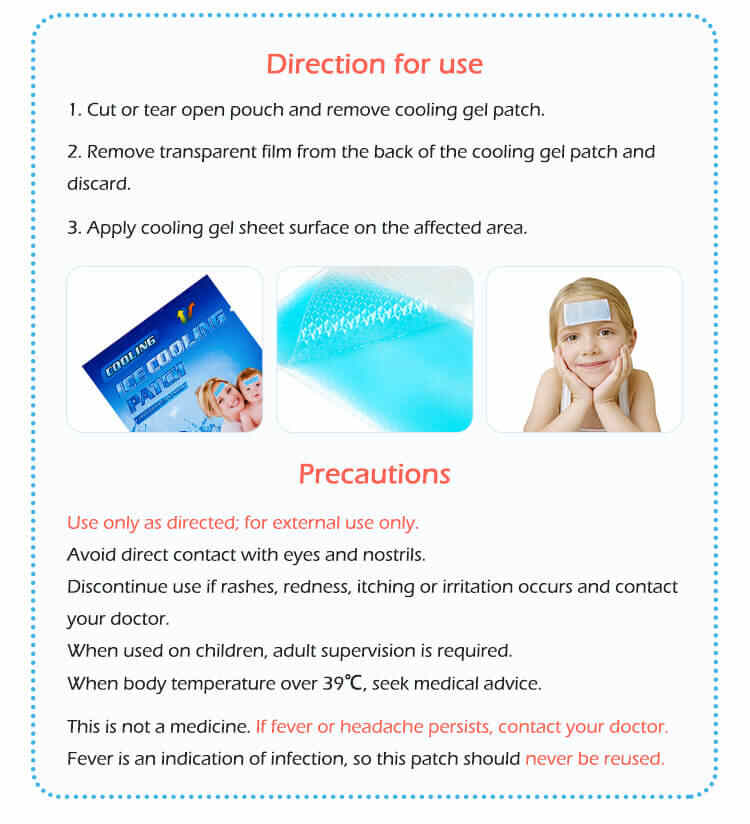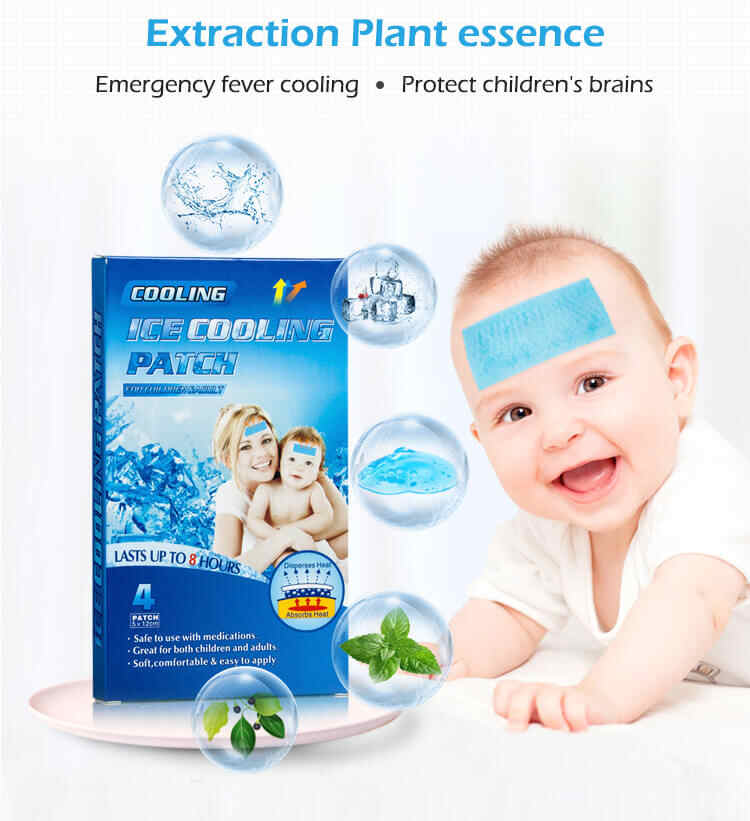What Is the Difference Between a Fever Cooling Patch OEM and a Private Label?
In today’s booming health and personal care market, fever cooling patches have emerged as a convenient, non-invasive, and fast-acting solution for both children and adults. As a business looking to enter or expand in this sector, understanding the difference between fever cooling patch OEM and private label fever cooling patch solutions is crucial to making strategic decisions.
Although the terms "OEM" and "Private Label" are sometimes used interchangeably, they refer to distinct business models. This article offers a comprehensive explanation of the differences, advantages, and considerations associated with each. It will also guide you in choosing the right path for your brand—especially if you are sourcing from a fever cooling patch manufacturer or fever cooling patch supplier.

1. Definition: OEM vs. Private Label in Fever Cooling Patches
What Is a Fever Cooling Patch OEM?
OEM stands for Original Equipment Manufacturer. In the context of fever cooling patch OEM, this means a manufacturer produces patches based on the buyer’s specific requirements, which may include:
Unique formulation or ingredients
Custom sizes or shapes
Special packaging
Branding and design provided by the buyer
Proprietary features such as longer cooling duration, child-safe adhesives, or eco-friendly materials
This model allows businesses to develop a custom fever cooling patch from scratch, with full control over the product specifications and positioning.
What Is a Private Label Fever Cooling Patch?
In private labeling, a fever cooling patch manufacturer produces a pre-formulated and pre-tested product. Buyers can rebrand the product as their own without having to develop the formula or manufacturing process.
A private label fever cooling patch typically involves:
Pre-developed product from the manufacturer
Custom packaging and branding under the buyer’s name
Limited changes to the product itself
Faster time-to-market
Lower minimum order quantities (MOQs)
In summary:
| Feature | Fever Cooling Patch OEM | Private Label Fever Cooling Patch |
|---|---|---|
| Product Formula | Fully customizable | Pre-formulated |
| Branding | Full control | Your brand on ready-made product |
| Time to Market | Longer (due to R&D) | Shorter (product is ready) |
| Cost | Higher development costs | Lower initial investment |
| Innovation Potential | High | Limited |
| MOQ | Often higher | Often lower |
2. When to Choose Fever Cooling Patch OEM
A fever cooling patch OEM is ideal when:
You want to create a custom fever cooling patch that stands out in a crowded market
You need specialized features (e.g., longer cooling duration, organic ingredients, special adhesives)
You’re targeting niche audiences (e.g., pediatric, sports, or sensitive skin markets)
You want full control over your product's ingredients and performance
Your business has the budget and time for R&D and product testing
Choosing the OEM model gives you a unique product that can’t be easily replicated by competitors.
3. When to Choose Private Label Fever Cooling Patch
Private label fever cooling patch options are best when:
You want to enter the market quickly
You are testing the market with minimal investment
You prefer lower MOQs
You are new to the industry and want a low-risk starting point
You want to build brand awareness before developing a custom formula
Private labeling allows you to focus on sales, marketing, and distribution, while relying on the fever cooling patch supplier for the production and technical details.
4. The Role of the Fever Cooling Patch Manufacturer
Whether you choose OEM or private label, your fever cooling patch manufacturer plays a critical role. They are responsible for:
Ensuring product safety and quality
Holding certifications (e.g., ISO, GMP, CE, FDA)
Meeting regulatory compliance for your target markets
Offering flexibility in customization or packaging
Providing samples and documentation (COA, MSDS, etc.)
An experienced fever cooling patch supplier will offer both OEM and private label services, giving you the flexibility to start with one model and transition to the other as your business grows.
5. Advantages of OEM Fever Cooling Patch Solutions
Brand Exclusivity: You get a unique formula not available to competitors.
Better Differentiation: Stand out with unique features or specialized use cases.
High Customer Loyalty: A superior, custom-tailored product builds trust.
Higher Profit Margins: Exclusive products often command higher prices.
However, OEM also comes with higher initial costs, longer lead times, and more complex regulatory pathways.
6. Advantages of Private Label Fever Cooling Patches
Quick Market Entry: Ideal for seasonal products or urgent market demands.
Lower Investment: No need for R&D or clinical testing.
Less Risk: Proven formulations with existing regulatory approval.
Flexible MOQs: Suited for startups or test runs.
Private label options are excellent for building brand awareness and testing customer preferences before developing a custom fever cooling patch later on.
7. Transitioning from Private Label to OEM
Many successful brands start with private label fever cooling patch products to enter the market quickly. Once they gain traction, they move to fever cooling patch OEM for:
Better margins
Stronger brand identity
Product innovation
Market competitiveness
A reliable fever cooling patch manufacturer can support both models, helping your brand scale over time.
8. Regulatory and Quality Considerations
Whether OEM or private label, ensure your fever cooling patch supplier meets the following:
ISO 13485 and GMP for quality manufacturing
FDA or CE compliance for international trade
Availability of product testing and safety reports
Secure and traceable supply chain
Confidentiality agreements (especially for custom formulations)
Compliance is critical to avoid legal complications, product recalls, or damaged brand reputation.
9. Which Model Is Right for Your Business?
Ask yourself:
What’s my budget for product development?
How quickly do I need to launch?
Am I targeting a specific niche or broad audience?
Do I have long-term goals for product innovation?
How involved do I want to be in formulation and testing?
If innovation and control are your priorities, choose OEM. If speed and simplicity matter most, private label is your best option.
Conclusion
Understanding the difference between fever cooling patch OEM and private label fever cooling patch is essential for any business entering this industry. While OEM offers customization and brand exclusivity, private label provides speed and lower risk. Your choice depends on your goals, resources, and timeline.
No matter which route you choose, working with a certified and experienced fever cooling patch manufacturer or fever cooling patch supplier is critical. A good partner can guide you through formulation, compliance, production, and scale—ensuring your brand succeeds in the growing fever cooling patch market.
Related Questions and Answers
Q1: Can I switch from private label to OEM later?
A1: Yes. Many businesses start with private label and transition to OEM once they’ve validated market demand and built brand loyalty.
Q2: What’s the minimum order quantity (MOQ) for OEM vs. private label?
A2: OEM typically requires higher MOQs due to customization, while private label offers lower MOQs with pre-made formulations.
Q3: Who owns the product formula in an OEM partnership?
A3: In most cases, the brand owns the formula if developed under OEM. For private label, the formula remains the property of the manufacturer.
Q4: Which is more expensive: OEM or private label fever cooling patch?
A4: OEM is usually more expensive due to R&D, testing, and custom production. Private label is more budget-friendly upfront.
Q5: Do both models require certification and compliance?
A5: Absolutely. Whether OEM or private label, your fever cooling patch supplier must comply with relevant international standards (ISO, FDA, CE, GMP).






